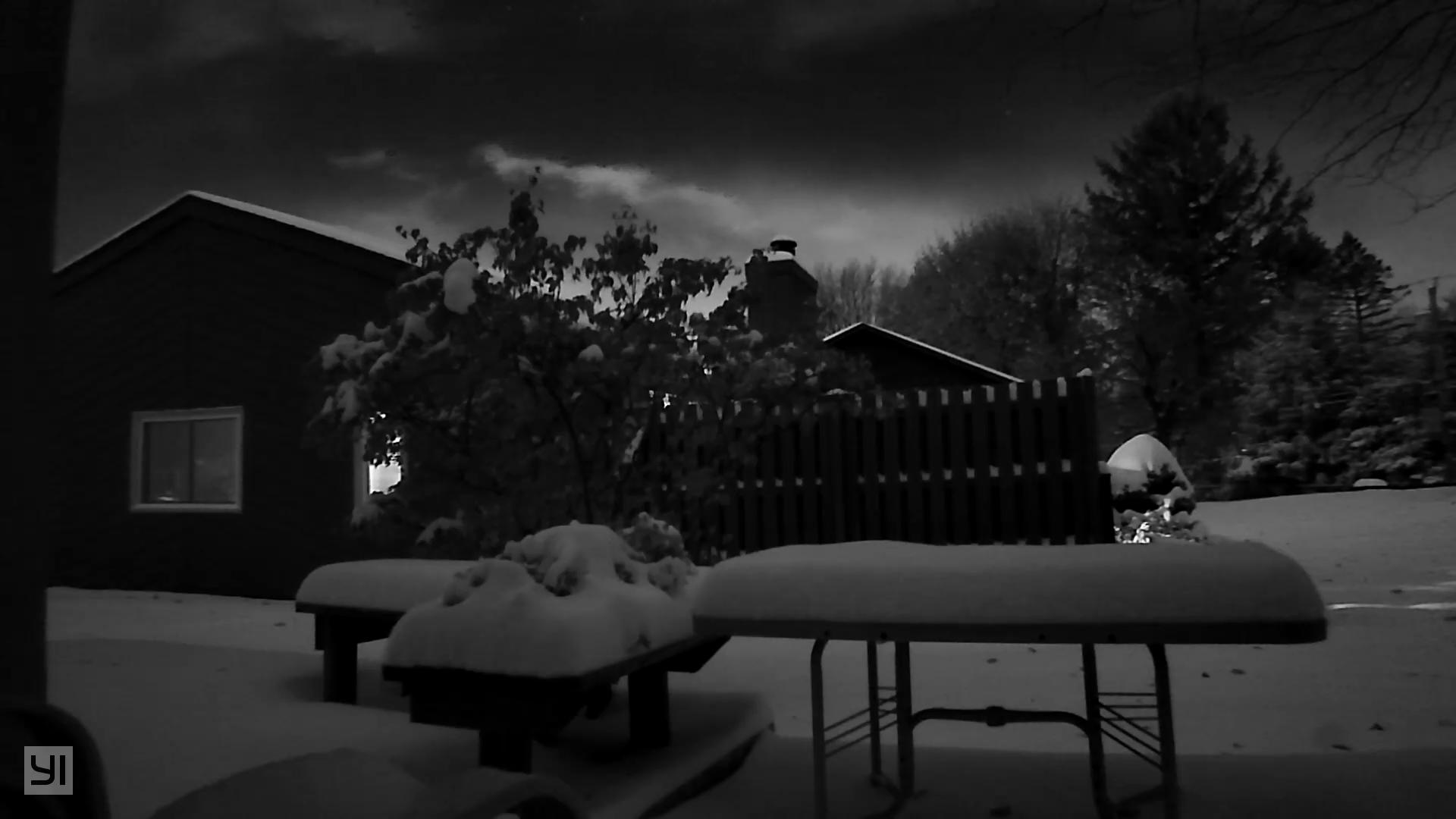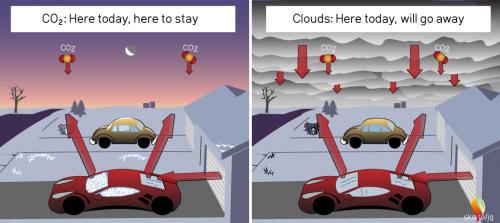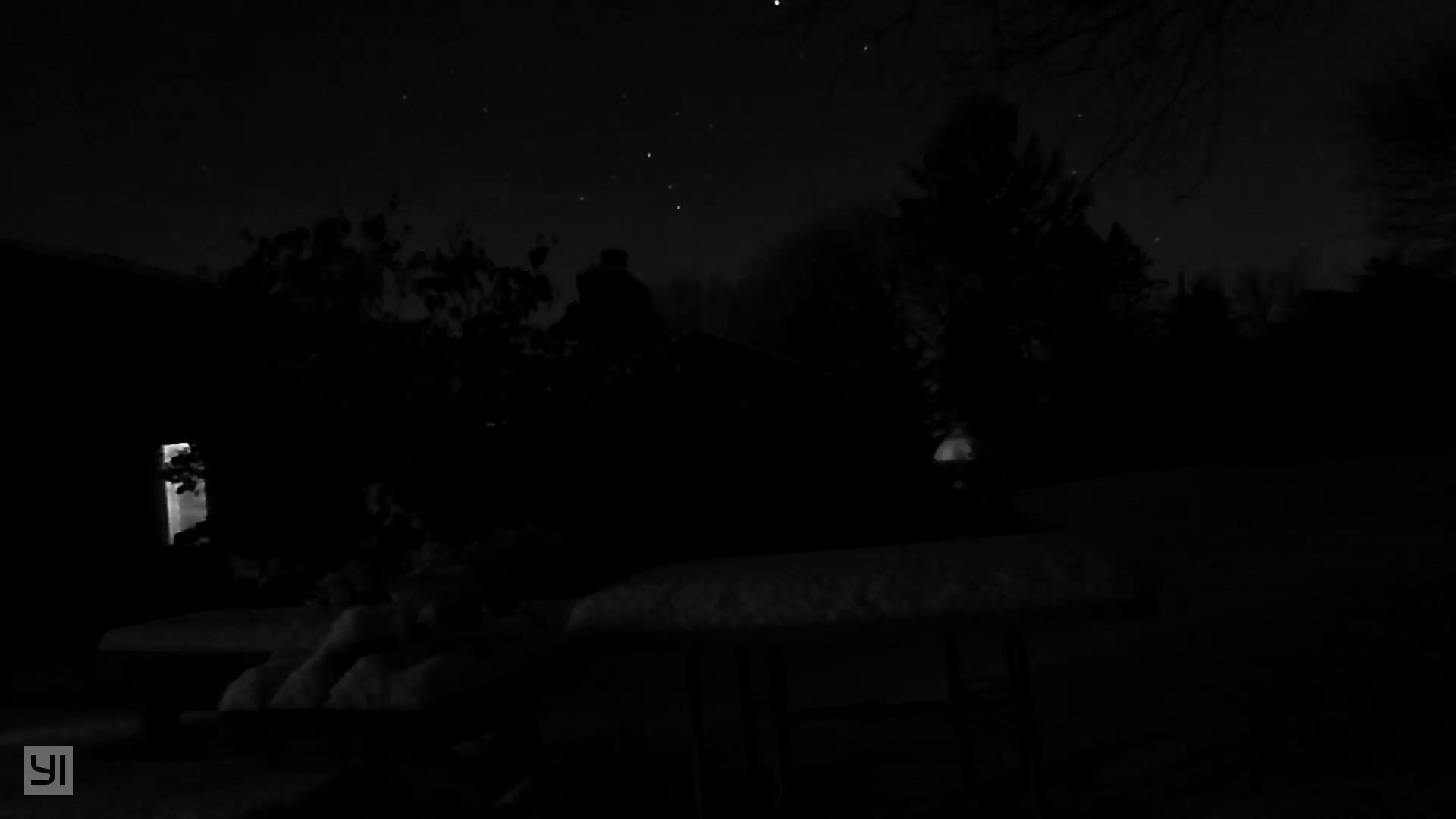It looks like you're using an Ad Blocker.
Please white-list or disable AboveTopSecret.com in your ad-blocking tool.
Thank you.
Some features of ATS will be disabled while you continue to use an ad-blocker.
4
share:
I live in upstate NY and I have noticed on different nights my outside cameras at night time are illuminated like it were day time but is pitch black
outsaide.
the only thing i can think of is the cloud cover may be bouncing IR light around.
the moon isnt super strong and im not by any lights so it is just strange seeing the very stark difference. looking with my eyes its black as ink out my window.
so what does ATS say?
normal

tonight

pics are taken very close as far as time of night and the normal pic is from a week or so ago
the only thing i can think of is the cloud cover may be bouncing IR light around.
the moon isnt super strong and im not by any lights so it is just strange seeing the very stark difference. looking with my eyes its black as ink out my window.
so what does ATS say?
normal

tonight

pics are taken very close as far as time of night and the normal pic is from a week or so ago
So there's more cloud cover when the brighter image was taken? The clouds trap infrared radiation emitted from the ground, and re-emit some of it back toward the ground, making the cloudy infrared image look brighter.
originally posted by: penroc3
I live in upstate NY and I have noticed on different nights my outside cameras at night time are illuminated like it were day time but is pitch black outsaide.
the only thing i can think of is the cloud cover may be bouncing IR light around.
The Greenhouse Effect is Like a Cloudy Night
At night clouds trap infrared radiation emitted from the ground, similar to greenhouse gases, and re-emit some of the absorbed radiation back to the ground.
More nighttime cloud cover means more trapped heat, and warmer temperatures near the ground, just as more CO2 in the atmosphere means more trapped heat, and warmer temperatures.
Because clouds are big and thick, their radiation-trapping effect is felt immediately, within a single night.
Because CO2 is diffuse, its effect is felt slowly, over many decades.
Increasing the concentration of CO2 in the atmosphere is like increasing the cloud cover at night: both warm the Earth by trapping infrared radiation.
edit on 2019122 by Arbitrageur because: clarification
a reply to: Arbitrageur
Lol.
That uses the IR effect to make believe that CO2 is some mythical heavyweight.
Using a correct interpretation in science to support a mythical CO2 problem.
typical crap for the uneducated to swallow.
P
At night clouds trap infrared radiation emitted from the ground, similar to greenhouse gases, and re-emit some of the absorbed radiation back to the ground.
More nighttime cloud cover means more trapped heat, and warmer temperatures near the ground, just as more CO2 in the atmosphere means more trapped heat, and warmer temperatures.
Because clouds are big and thick, their radiation-trapping effect is felt immediately, within a single night.
Because CO2 is diffuse, its effect is felt slowly, over many decades.
Increasing the concentration of CO2 in the atmosphere is like increasing the cloud cover at night: both warm the Earth by trapping infrared radiation.
Lol.
That uses the IR effect to make believe that CO2 is some mythical heavyweight.
Using a correct interpretation in science to support a mythical CO2 problem.
typical crap for the uneducated to swallow.
P
a reply to: Arbitrageur
ill have to wait until a warm cloudy spring night to put it to the test.
thought it was interesting its such a different amount of light.
ill have to wait until a warm cloudy spring night to put it to the test.
thought it was interesting its such a different amount of light.
a reply to: Flyingclaydisk
i figured as much, the snow basically acting like a reflector seemed to make the most sense.
i just noticed it a few times and thought i would ask.
i kind of like the top one, too bad there is a watermark and a light on in the picture
i figured as much, the snow basically acting like a reflector seemed to make the most sense.
i just noticed it a few times and thought i would ask.
i kind of like the top one, too bad there is a watermark and a light on in the picture
a reply to: penroc3
The altitude of the clouds matter. Nights when the clouds are lower might light up the sky more than nights when the clouds are higher.
I live less than 5 miles from a shopping district and some nights the lights from the businesses reflect off the clouds into my back yard enough to see relatively clearly, while other nights the clouds are only somewhat lit above only those businesses, and that light not making it back to me. On those nights my back yard is dark.
The altitude of the clouds matter. Nights when the clouds are lower might light up the sky more than nights when the clouds are higher.
I live less than 5 miles from a shopping district and some nights the lights from the businesses reflect off the clouds into my back yard enough to see relatively clearly, while other nights the clouds are only somewhat lit above only those businesses, and that light not making it back to me. On those nights my back yard is dark.
edit on 12/2/2019 by Soylent Green Is People because: (no reason given)
a reply to: penroc3
Now this is probably prohibitively expensive for a domestic user but have a look at these, full colour night vision.
www.x20.org...
I wonder if this is how the Grey's see in the dark or if it's more like your images.
Now this is probably prohibitively expensive for a domestic user but have a look at these, full colour night vision.
www.x20.org...
I wonder if this is how the Grey's see in the dark or if it's more like your images.
a reply to: LABTECH767
I've seen those, Sony has something very very similar and both are super cool.
im not 100% convinced that the color isn't just some software trick mixed with a good low light camera. It would be interesting to see the after shoot processing from these cameras.
color as im sure you know is just a gradient of the EM band that we can see, so i would imagine creatures terrestrial or not that can naturally see into the IR and any other spectrum will just see it as part of their normal colored vision(to them).
clearly the colored light and IR, UV are not interchangeable but i would bet that having a multi spectral overlay on top of normal human vision would look very drab because its not our natural vision but the mantis shrimp more than likely sees many many more 'colors' as it is natural vision to them(and just look at them).
if the grays are these genetic masters you would think they would just incorporate genes that would allow them to naturally see into these spectrum, and the black eyes are just super advanced filters that can change on the fly(super advanced meta materials).
Imagine if they go to abduct someone and the person tries to blind them with a flashlight but the lenses almost instantly block only the visible light coming out or just turn it wayyy down. Heck we are messing with augmented reality NOW and one of the biggest complaints is that it doesn't fill your whole vision and the glasses obstruct your view.
imagine just laying those black 'lenses' on your eyes and everything just looks normal until you hit the light and all of a sudden you have night vision, or if its foggy out and you are looking for someone you can use the green night vision with a FLIR overlay and then back to normal.
i would buy that just for the coolness of them let alone all the other things you could do with them(entertainment or otherwise).
mix them with some sort of non invasive brain link and you have synthetic telepathy...
I've seen those, Sony has something very very similar and both are super cool.
im not 100% convinced that the color isn't just some software trick mixed with a good low light camera. It would be interesting to see the after shoot processing from these cameras.
color as im sure you know is just a gradient of the EM band that we can see, so i would imagine creatures terrestrial or not that can naturally see into the IR and any other spectrum will just see it as part of their normal colored vision(to them).
clearly the colored light and IR, UV are not interchangeable but i would bet that having a multi spectral overlay on top of normal human vision would look very drab because its not our natural vision but the mantis shrimp more than likely sees many many more 'colors' as it is natural vision to them(and just look at them).
if the grays are these genetic masters you would think they would just incorporate genes that would allow them to naturally see into these spectrum, and the black eyes are just super advanced filters that can change on the fly(super advanced meta materials).
Imagine if they go to abduct someone and the person tries to blind them with a flashlight but the lenses almost instantly block only the visible light coming out or just turn it wayyy down. Heck we are messing with augmented reality NOW and one of the biggest complaints is that it doesn't fill your whole vision and the glasses obstruct your view.
imagine just laying those black 'lenses' on your eyes and everything just looks normal until you hit the light and all of a sudden you have night vision, or if its foggy out and you are looking for someone you can use the green night vision with a FLIR overlay and then back to normal.
i would buy that just for the coolness of them let alone all the other things you could do with them(entertainment or otherwise).
mix them with some sort of non invasive brain link and you have synthetic telepathy...
new topics
-
Farmers wife
Music: 1 hours ago -
NJ Drones tied to Tesla explosion at Trump Las vegas
General Conspiracies: 2 hours ago -
New Jersey-Teachers Can Now Be Certified Without Passing Basic Reading Writing Math Testing
Education and Media: 5 hours ago -
Matthew Livelsberger said he was being followed by FBI
Political Conspiracies: 8 hours ago -
How the Sikhs Deal with Muslim Grooming Gangs – Tommy Robinson
Social Issues and Civil Unrest: 9 hours ago -
Paranoid Liberals Believe U.S. Service Members are More Dangerous than Illegal Aliens.
Social Issues and Civil Unrest: 10 hours ago -
The 119th Congress has Officially Opened for Business
Mainstream News: 11 hours ago -
Here we again... CHINA having mass outbreak of something
Diseases and Pandemics: 11 hours ago
top topics
-
Matthew Livelsberger said he was being followed by FBI
Political Conspiracies: 8 hours ago, 16 flags -
FIEND SLASHED: Sara Sharif’s killer dad ‘has neck & face sliced open with jagged tuna tin lid
Mainstream News: 17 hours ago, 11 flags -
Here we again... CHINA having mass outbreak of something
Diseases and Pandemics: 11 hours ago, 8 flags -
The 119th Congress has Officially Opened for Business
Mainstream News: 11 hours ago, 7 flags -
New Jersey-Teachers Can Now Be Certified Without Passing Basic Reading Writing Math Testing
Education and Media: 5 hours ago, 6 flags -
How the Sikhs Deal with Muslim Grooming Gangs – Tommy Robinson
Social Issues and Civil Unrest: 9 hours ago, 6 flags -
Paranoid Liberals Believe U.S. Service Members are More Dangerous than Illegal Aliens.
Social Issues and Civil Unrest: 10 hours ago, 6 flags -
Flee from idolatry
Religion, Faith, And Theology: 17 hours ago, 3 flags -
NJ Drones tied to Tesla explosion at Trump Las vegas
General Conspiracies: 2 hours ago, 3 flags -
Farmers wife
Music: 1 hours ago, 0 flags
active topics
-
Matthew Livelsberger said he was being followed by FBI
Political Conspiracies • 60 • : rickymouse -
Tesla Cybertruck Explodes in Front of Trump Hotel in Las Vegas
Mainstream News • 194 • : Mantiss2021 -
-@TH3WH17ERABB17- -Q- ---TIME TO SHOW THE WORLD--- -Part- --44--
Dissecting Disinformation • 3922 • : 777Vader -
New Jersey-Teachers Can Now Be Certified Without Passing Basic Reading Writing Math Testing
Education and Media • 9 • : rickymouse -
NJ Drones tied to Tesla explosion at Trump Las vegas
General Conspiracies • 6 • : berbofthegreen -
Candidate TRUMP Now Has Crazy Judge JUAN MERCHAN After Him - The Stormy Daniels Hush-Money Case.
Political Conspiracies • 2171 • : WeMustCare -
US disburses $3.4 billion in budget aid for Ukraine, Yellen says
US Political Madness • 30 • : WeMustCare -
Paranoid Liberals Believe U.S. Service Members are More Dangerous than Illegal Aliens.
Social Issues and Civil Unrest • 28 • : WeMustCare -
Farmers wife
Music • 0 • : berbofthegreen -
President-elect Trump asks the Supreme Court to Let Tik-Tok Continue Operating in the U.S..
Mainstream News • 33 • : WeMustCare
4


